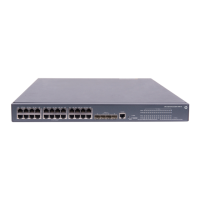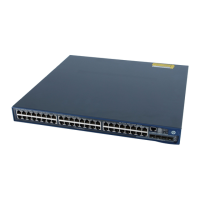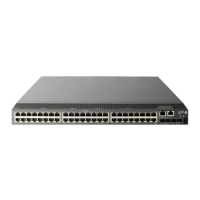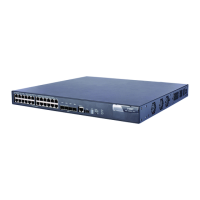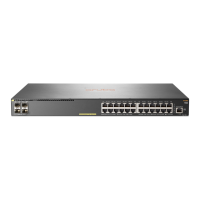344
Relationships among IPv6 PIM protocols
In an IPv6 PIM network, IPv6 PIM-DM cannot work with IPv6 PIM-SM, IPv6 BIDIR-PIM, or IPv6 PIM-SSM.
However, IPv6 PIM-SM, IPv6 BIDIR-PIM, and IPv6 PIM-SSM can work together. When they work
together, they are adopted in the order of IPv6 PIM-SSM, IPv6 BIDIR-PIM, and IPv6 PIM-SM, as shown in
Figure 98.
Figure 98 Selection of IPv6 PIM-SM, IPv6 BIDIR-PIM, and IPv6 PIM-SSM
A receiver joins IPv6 multicast group G.
G is in the
IPv6 SSM group range?
Enable IPv6 BIDIR-PIM for G
IPv6 BIDIR-PIM is enabled?
G has corresponding
IPv6 BIDIR-PIM RP?
Yes
No
Yes
No
Yes
No
Enable IPv6 PIM-SSM for G
MLD SSM mapping is
configured for G?
Enable IPv6 PIM-SM for
G
The receiver specifies an
IPv6 multicast source?
No
Yes
No
Yes
NOTE:
For more information about MLD SSM mapping, see the chapter “MLD configuration.”
Protocols and standards
IPv6 PIM–related specifications are as follows:
• RFC 3973, Protocol Independent Multicast-Dense Mode(PIM-DM):Protocol Specification(Revised)
• RFC 4601, Protocol Independent Multicast-Sparse Mode (PIM-SM): Protocol Specification (Revised)
• RFC 3956, Embedding the Rendezvous Point (RP) Address in an IPv6 Multicast Address
• RFC 5015, Bidirectional Protocol Independent Multicast (BIDIR-PIM)
• RFC 5059, Bootstrap Router (BSR) Mechanism for Protocol Independent Multicast (PIM)
• RFC 4607, Source-Specific Multicast for IP
• draft-ietf-ssm-overview-05, An Overview of Source-Specific Multicast (SSM)
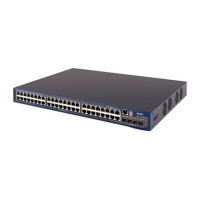
